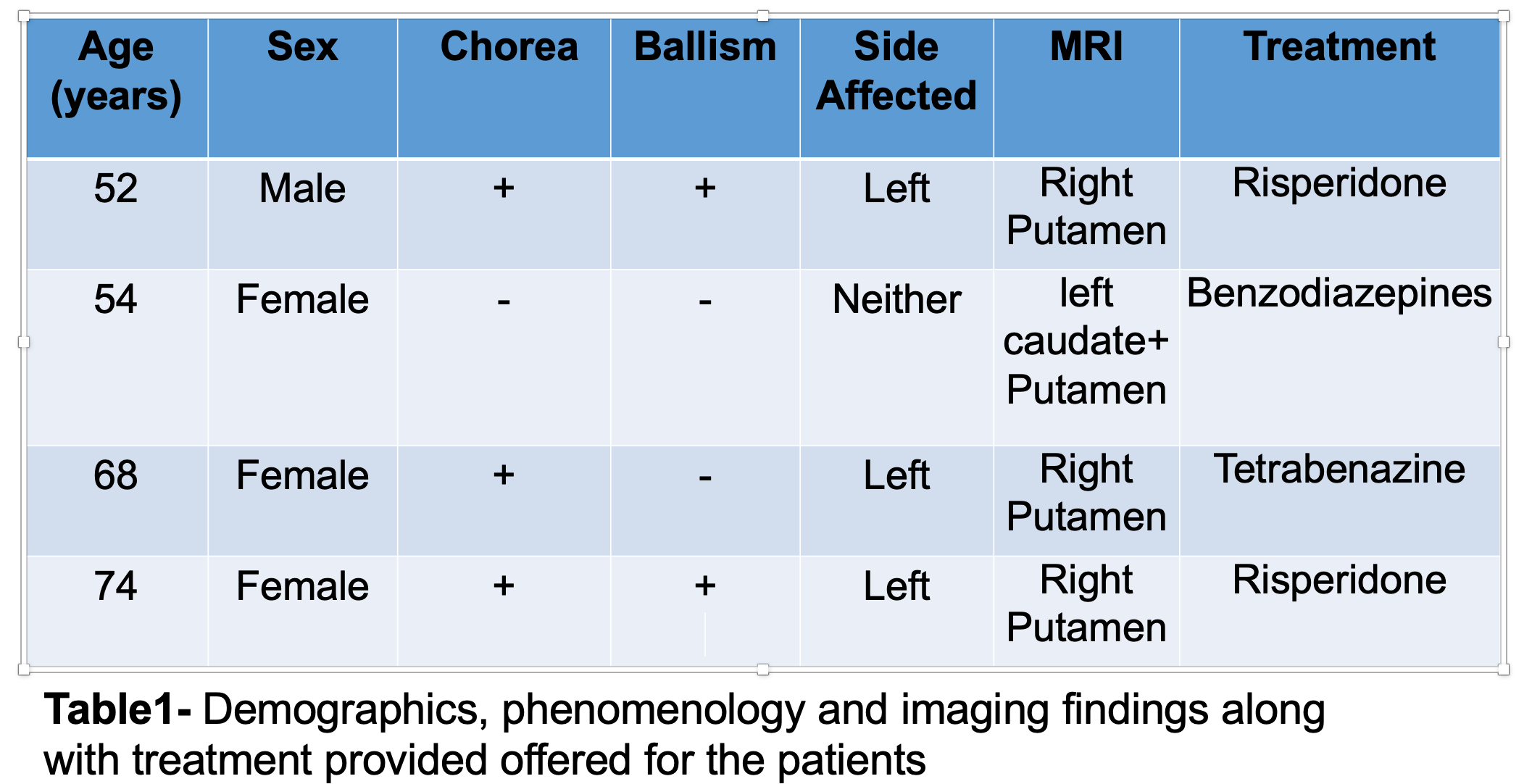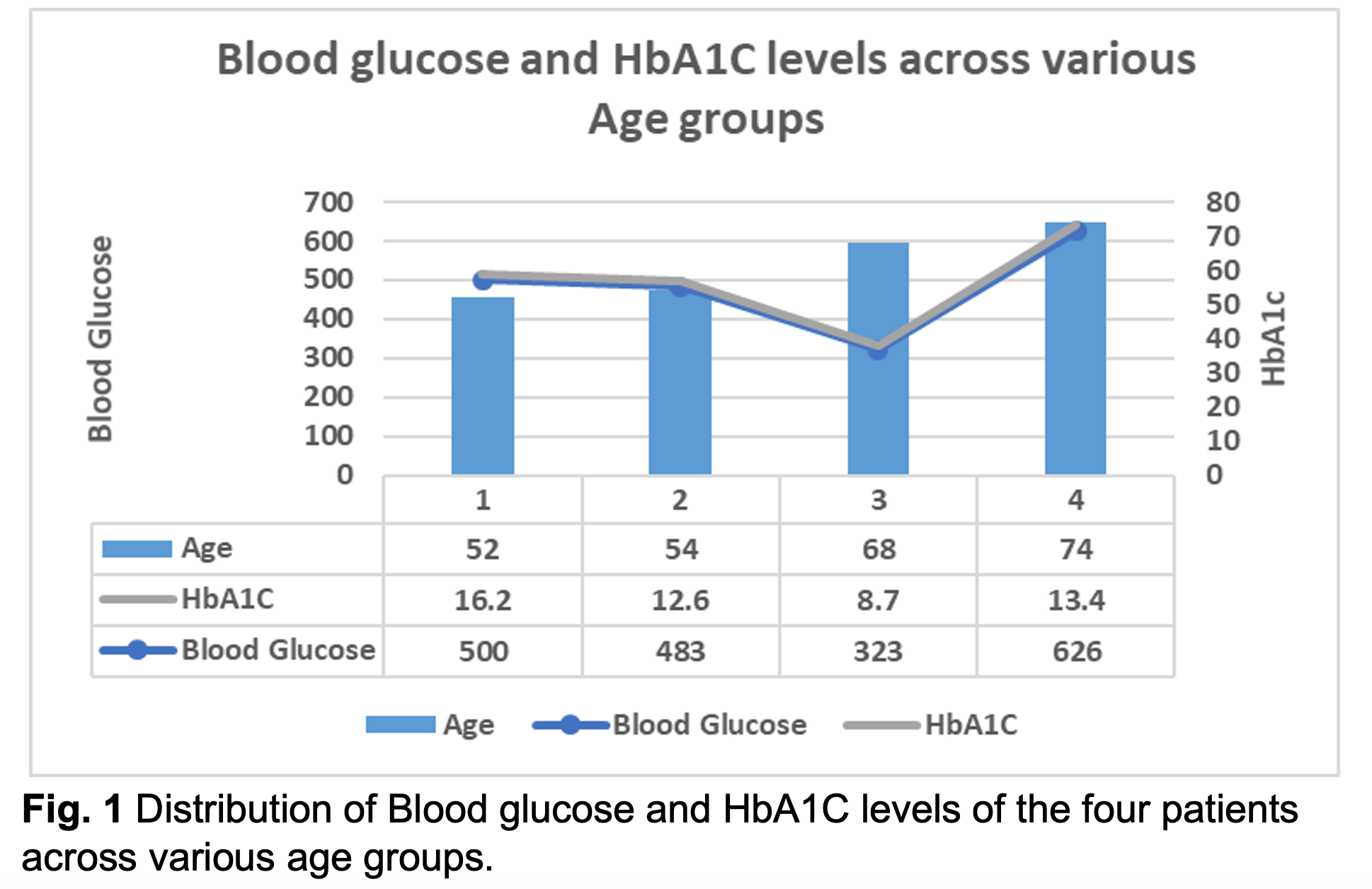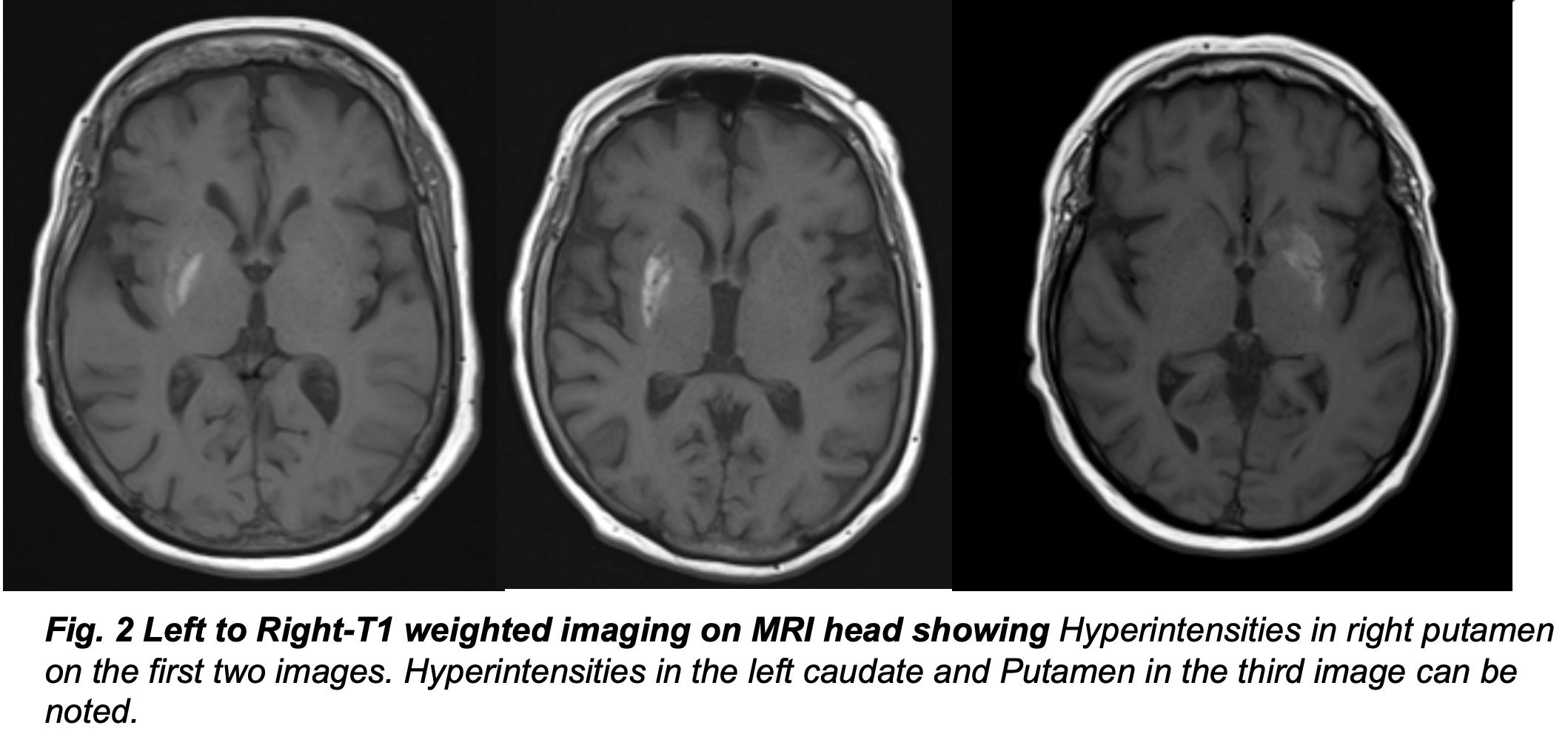Category: Choreas (Non-Huntington's Disease)
Objective: To avoid missed diagnosis of non-ketotic hyperglycemic hemichorea hemiballismus by discussing the phenomenology, radiological findings and therapy through this case series.
Background: Hemichorea–hemiballismus associated with non-ketotic hyperglycemia is a rare clinico-radiological syndrome characterized by involuntary, non-rhythmic, continuous, and proximal movements on one side of the body secondary to a lesion in contralateral striatum. It is hypothesized that this pathology could be secondary to microvascular ischemic injury resulting in petechial hemorrhage altering the dopaminergic activity in the putamen.
Method: Patients seen by neurology team, with abnormal movements on one side of the body concerning for hemichorea, associated with hyperglycemia were studied at University of Kentucky Medical Center between March and October of 2021. A detailed workup including history, pertinent labs, HbA1c, imaging were obtained.
Results: We had 4 patients with mean age of 60 years (52-74 years), who were admitted to stroke, general neurology and medicine services with imaging findings concerning for non-ketotic hyperglycemia. Three out of four patients were women, and their mean blood glucose was 483 mg/ dl (323- 626 mg/dl) and mean HbA1c level was 12.7% (8.7-16.2%). Three out of four patients presented with acute onset hemichorea as a presenting complaint, whereas the other one presented with altered mental status requiring ICU admission. All 3 of them had left sided chorea with normal cognition and contralateral putamen hyperintensities on T1 weighted images on MRI. Only one of the patients had caudate nucleus involvement along with putamen on MRI. 3 of the 4 patients received dopamine receptor antagonists with good response within 1 week after initiation and one of them was sedated with benzodiazepines on arrival so hemichorea was not noticed.
Conclusion: Clinicians should have high suspicion for hemichorea when encountered with a patient with non-ketotic hyperglycemia and contralateral imaging findings in striatum. Optimizing blood glucose levels along with early initiation of dopamine receptor antagonists has shown complete resolution of symptoms.
One of the case videos has been presented by me, as video case challenge at MDS-PAS 6th Annual Movement Disorders school for Neurology Residents.
References: Cosentino, C., Torres, L., Nuñez, Y., Suarez, R., Velez, M., & Flores, M. (2016). Hemichorea/Hemiballism Associated with Hyperglycemia: Report of 20 Cases. Tremor and other hyperkinetic movements (New York, N.Y.), 6, 402.
Carrion, D. M., & Carrion, A. F. (2013). Non-ketotic hyperglycaemia hemichorea-hemiballismus and acute ischaemic stroke. BMJ case reports, 2013, bcr2012008359.
To cite this abstract in AMA style:
RP. Vasireddy, M. Thandampallayam, Z. Guduru. A Case series of Hemichorea Hemiballism Associated with Non-ketotic Hyperglycemia and Unique Imaging findings [abstract]. Mov Disord. 2022; 37 (suppl 2). https://www.mdsabstracts.org/abstract/a-case-series-of-hemichorea-hemiballism-associated-with-non-ketotic-hyperglycemia-and-unique-imaging-findings/. Accessed April 15, 2025.« Back to 2022 International Congress
MDS Abstracts - https://www.mdsabstracts.org/abstract/a-case-series-of-hemichorea-hemiballism-associated-with-non-ketotic-hyperglycemia-and-unique-imaging-findings/



